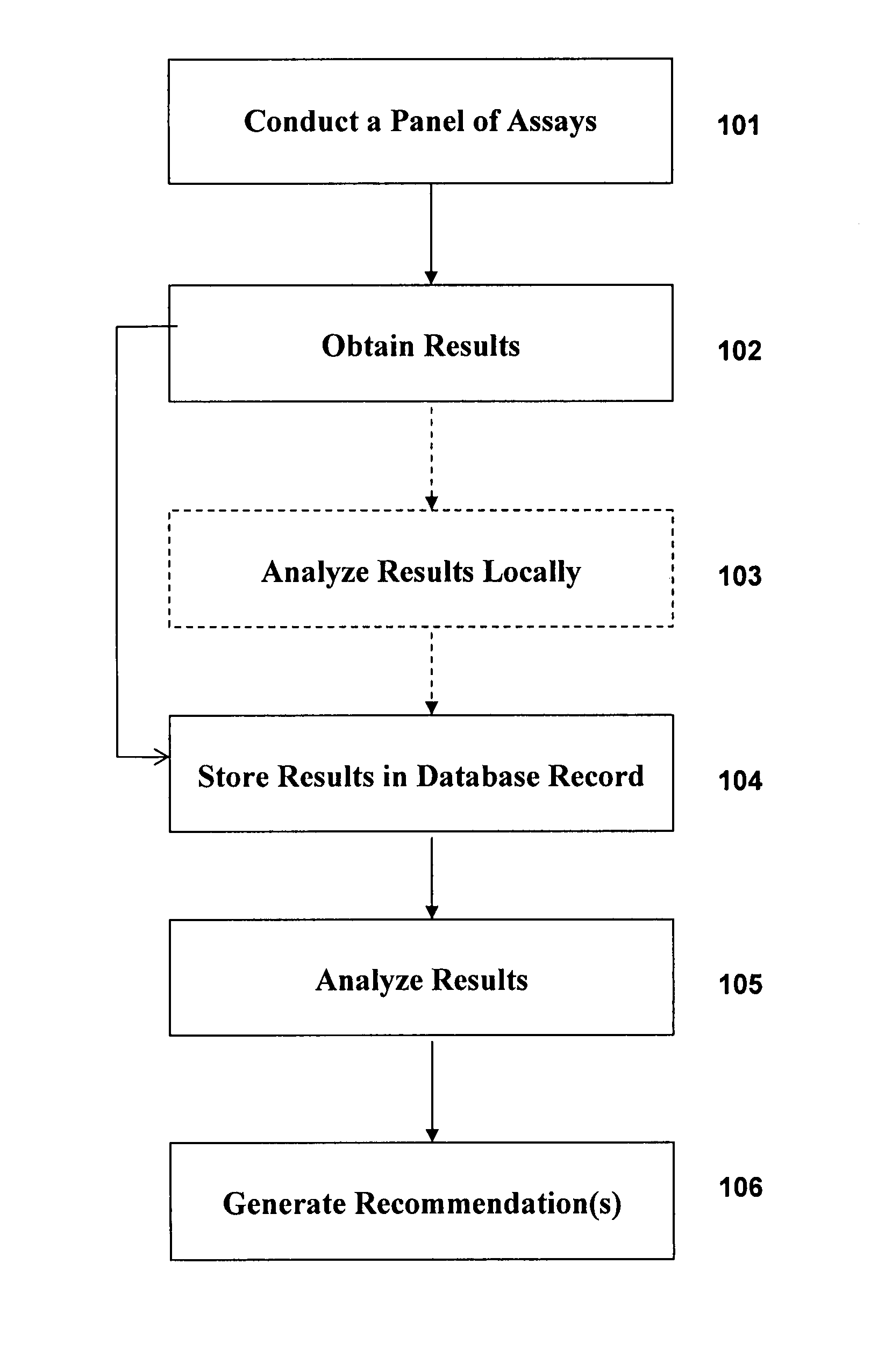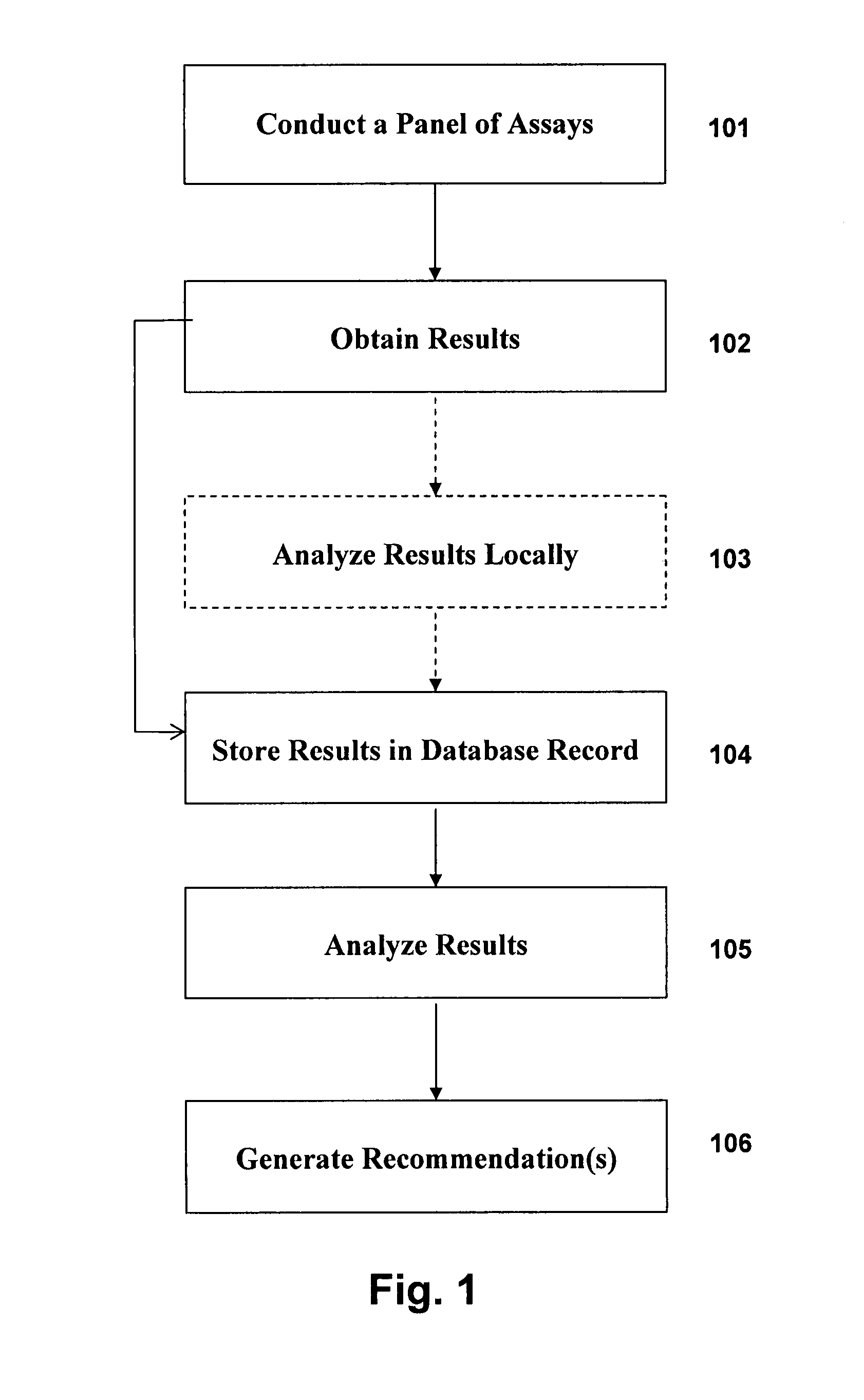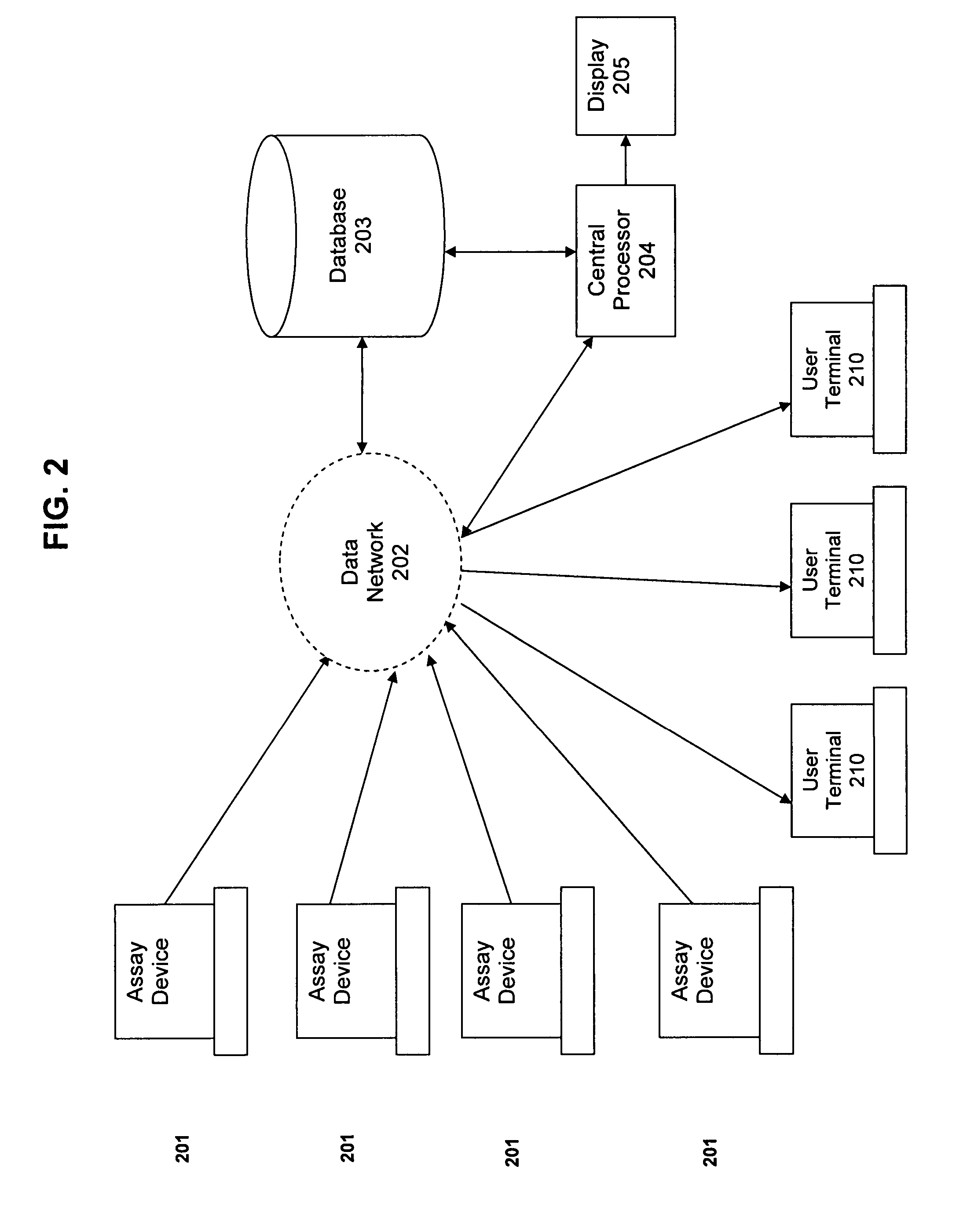Systems and methods for obtaining, storing, processing and utilizing immunologic and other information of individuals and populations
a technology of immunologic and other information, applied in the field of immunology and medical informatics, can solve the problems of local adverse reactions at the injection site, inability to protect immunity beyond 10 years, and inability to fully protect against infection
- Summary
- Abstract
- Description
- Claims
- Application Information
AI Technical Summary
Benefits of technology
Problems solved by technology
Method used
Image
Examples
Embodiment Construction
General Overview
[0144]In what follows, systems and methods of the present invention will be often referred to as the “ImmunoScore” system, method and / or database, as the case may be. “ImmunoScore” is a trademark and / or service mark currently envisioned by the assignee hereof to be utilized in connection with exemplary embodiments of the present invention.
[0145]The present invention is directed to the collection, processing, and use of immunologic information. Immunologic information is to be understood in a broad sense, including any information which may be useful as an indicator of any immunological function of a mammalian body. More specifically, the present invention includes acquiring information that is indicative of the immune status of an individual, processing that information, storing the raw information as well as the outputs from the processing stage, and of that information at various times and in various ways to recommend various actions such as prophylactic or further...
PUM
 Login to View More
Login to View More Abstract
Description
Claims
Application Information
 Login to View More
Login to View More - R&D
- Intellectual Property
- Life Sciences
- Materials
- Tech Scout
- Unparalleled Data Quality
- Higher Quality Content
- 60% Fewer Hallucinations
Browse by: Latest US Patents, China's latest patents, Technical Efficacy Thesaurus, Application Domain, Technology Topic, Popular Technical Reports.
© 2025 PatSnap. All rights reserved.Legal|Privacy policy|Modern Slavery Act Transparency Statement|Sitemap|About US| Contact US: help@patsnap.com



